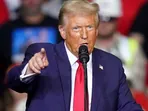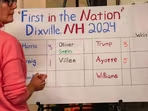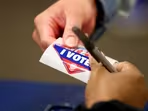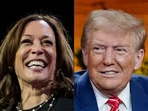New York City's congestion pricing program set to transform Manhattan
The Biden administration is poised to greenlight New York City's groundbreaking congestion pricing program, allowing tolls on vehicles entering Lower Manhattan.
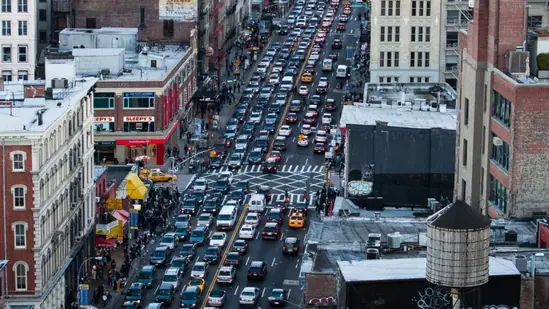
The Central Business District Tolling Program, commonly referred to as congestion pricing, will charge drivers for accessing the traffic-congested area below 60th street—an unprecedented initiative in the United States. The proposed toll rates during peak hours range from $9 to $23, with implementation scheduled for next spring.
After facing years of delays, the plan reached a significant milestone with the Federal Highway Administration's approval of an environmental assessment. The public has until Monday to review the report, after which federal authorization is expected. The New York Metropolitan Transportation Authority (MTA) will then finalize the toll rates, as well as discounts and exemptions for specific drivers.
Congestion pricing advocates argue that this program is vital for New York City's recovery from the devastating impacts of the COVID-19 pandemic. They view it as a transformative step to reimagine the city's future.
Governor Kathy Hochul emphasized the program's importance, stating, "This program is critical to New York City's long-term success."
The implementation of congestion pricing would mark the culmination of more than fifty years of efforts in New York City.
In 2007, Mayor Michael Bloomberg referred to congestion as the "elephant in the room" when proposing a toll program, which was rejected by state lawmakers.
A decade later, Governor Andrew Cuomo, who had long resisted congestion pricing, acknowledged its inevitability, declaring a subway state of emergency due to increased delays and a derailment that caused injuries. Two years later, the state granted the MTA approval to develop a congestion pricing program.
The United States faces its most severe gridlock challenge
With over 700,000 cars, taxis, and trucks flooding into Lower Manhattan daily, it is no surprise that this bustling area is notorious for having some of the worst gridlocks in the United States.
Cars crawl at an average speed of just 7.1 mph within the congestion pricing zone, a figure that continues to decline. Even public bus speeds have suffered, plummeting by 28% since 2010. New Yorkers find themselves losing an average of 117 hours each year stuck in traffic, resulting in nearly $2,000 of lost productivity and associated costs, as estimated by experts.
To tackle this persistent issue, a toll system has been proposed to reduce the number of vehicles entering the congestion zone by at least 10% daily and cut down the total miles traveled within the zone by 5%.
Beyond the inconvenience, congestion carries physical and societal costs. It leads to more accidents, increased carbon emissions, and heightened pollution, occupying valuable space that could be better utilized for pedestrians and outdoor dining.
ALSO READ| Prince William's playful comment about becoming an uncle takes the internet by storm
Supporters of the toll program also emphasize its potential to enhance public transit, a vital component of New York life. Currently, approximately 75% of trips downtown rely on public transportation.
However, public transit ridership remains 25% to 30% lower compared to pre-pandemic levels, according to the Metropolitan Transportation Authority (MTA). Congestion fees are projected to generate crucial revenue to fund $15 billion in future investments, aiming to modernize New York City's century-old public transit system.
These improvements, such as the introduction of new subway cars and electric signals, are crucial for attracting new riders, improving speed, and enhancing accessibility. Advocates stress that this is particularly important for low-income and minority residents who are less likely to own cars.
Kate Slevin, Executive Vice President of the Regional Plan Association, an urban planning and policy group, underscores the city's dependence on public transit. “We’re relying on that revenue to pay for needed upgrades and investments that ensure reliable, good transit service,” she stated.
Enhancing public transportation is also vital for New York City's post-pandemic economic recovery. If commutes to work are unreliable, individuals are less likely to visit the office or patronize nearby businesses. Congestion charge advocates hope that the program will create more space for essential amenities like wider sidewalks, bike lanes, plazas, benches, trees, and public bathrooms.
Reflecting on the future of New York City, Sam Schwartz, former New York City traffic commissioner and founder of a consulting firm, emphasizes the importance of prioritizing pedestrians. He suggests, “100 years ago we decided the automobile was the way to go, so we narrowed sidewalks and built highways…But the future of New York City is that the pedestrian should be king and queen. Everything should be subservient to the pedestrian.”
Addressing traffic challenges in Lower Manhattan
These cities have reported numerous benefits resulting from congestion pricing, including reduced carbon dioxide pollution, improved average speeds, and alleviated congestion.
London, for instance, experienced a 30% decrease in traffic congestion and a corresponding increase in average speeds within just one year of implementing its charge in 2003. In Stockholm, a study revealed a significant decrease of around 50% in children's acute asthma visits to doctors following the program's introduction in 2007.
But, the proposed congestion pricing program in New York City has faced opposition from various groups. Taxi and ride-share drivers, predominantly comprising low-income and immigrant workers, express concerns that the tolls will further strain their already challenging financial circumstances.
The Metropolitan Transportation Authority (MTA) estimates that demand for taxis could decrease by up to 17% within the congestion zone.
Critics from New York City's outer boroughs and neighboring New Jersey argue that the program disproportionately impacts low-income drivers who rely on cars as their primary mode of transportation to downtown Manhattan, as they lack viable alternatives. However, it's worth noting that among the 28 million people in the region, only approximately 16,100 low-income individuals commute to Lower Manhattan by car, as per MTA data.
ALSO READ| Royal family will welcome Harry if he divorces Meghan: Expert's explosive claim
Another concern raised by critics is the potential diversion of increased traffic and pollution from diesel trucks in Manhattan to lower-income areas such as the Bronx, which already experiences high rates of asthma hospitalizations.
To address these critiques, the MTA and other agencies have devised mitigation measures. Taxis and for-hire vehicles will be charged tolls only once per day. Drivers earning less than $50,000 annually or enrolled in specific government aid programs will receive a 25% discount after their first 10 trips each month. Furthermore, trucks and other vehicles will benefit from 50% discounts during overnight hours.
Additionally, the MTA has committed $10 million to install air filtration units in schools located near highways, allocated $20 million for an asthma-fighting program, and planned other investments to enhance air quality and mitigate environmental impacts in areas potentially affected by traffic diversion.
The outcome of New York City's congestion pricing program holds significant implications, with other cities closely monitoring the results. If successful, this initiative could serve as a blueprint for other U.S. cities grappling with post-pandemic recovery, climate change challenges, and aging public infrastructure.
The Los Angeles Times Editorial Board expressed its support, stating, "It's good to see New York City's program is moving forward. Los Angeles should watch, learn and go next."
Disclaimer: The copyright of this article belongs to the original author. Reposting this article is solely for the purpose of information dissemination and does not constitute any investment advice. If there is any infringement, please contact us immediately. We will make corrections or deletions as necessary. Thank you.
Title:New York City's congestion pricing program set to transform Manhattan
Url:https://www.investsfocus.com


